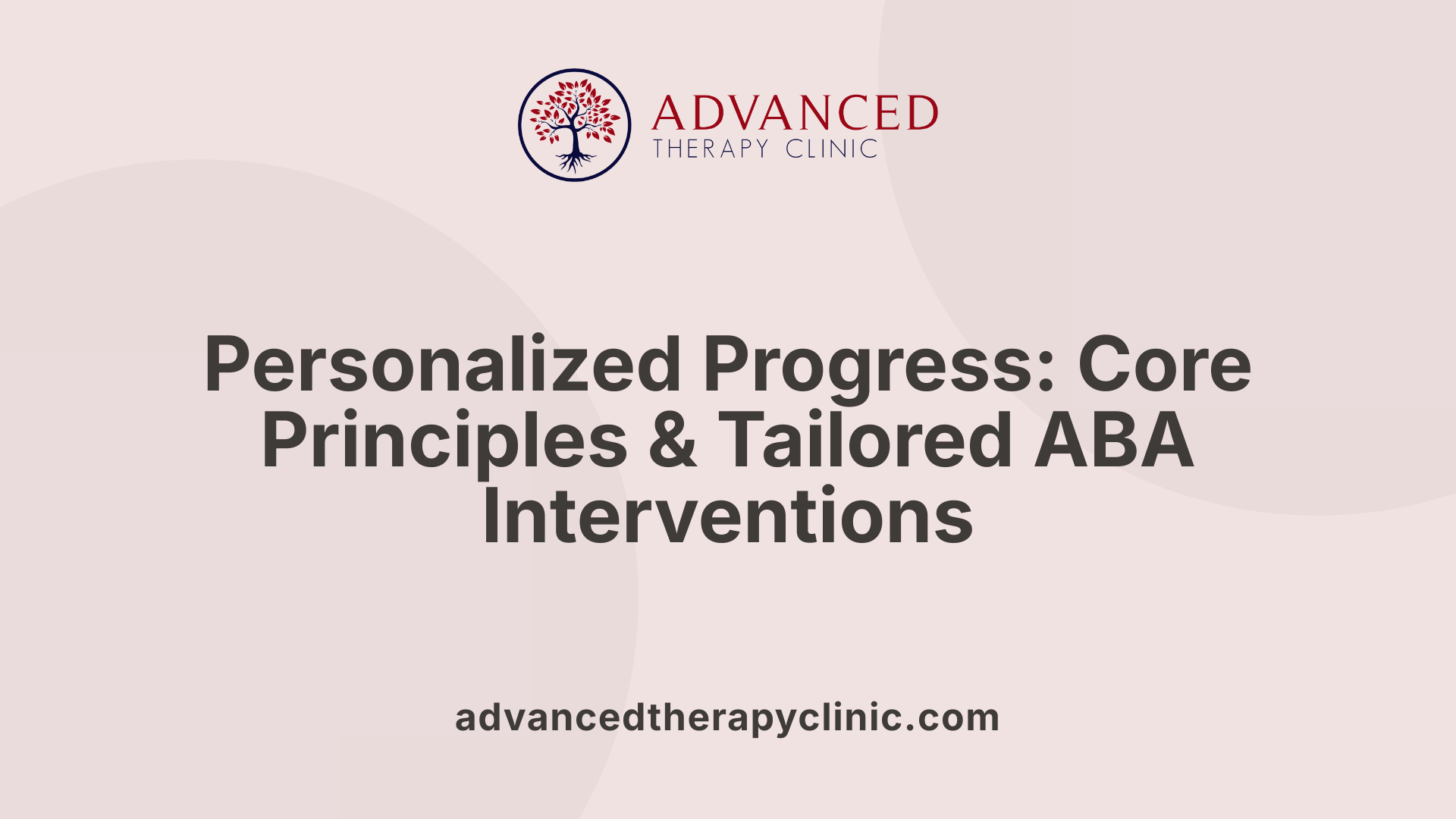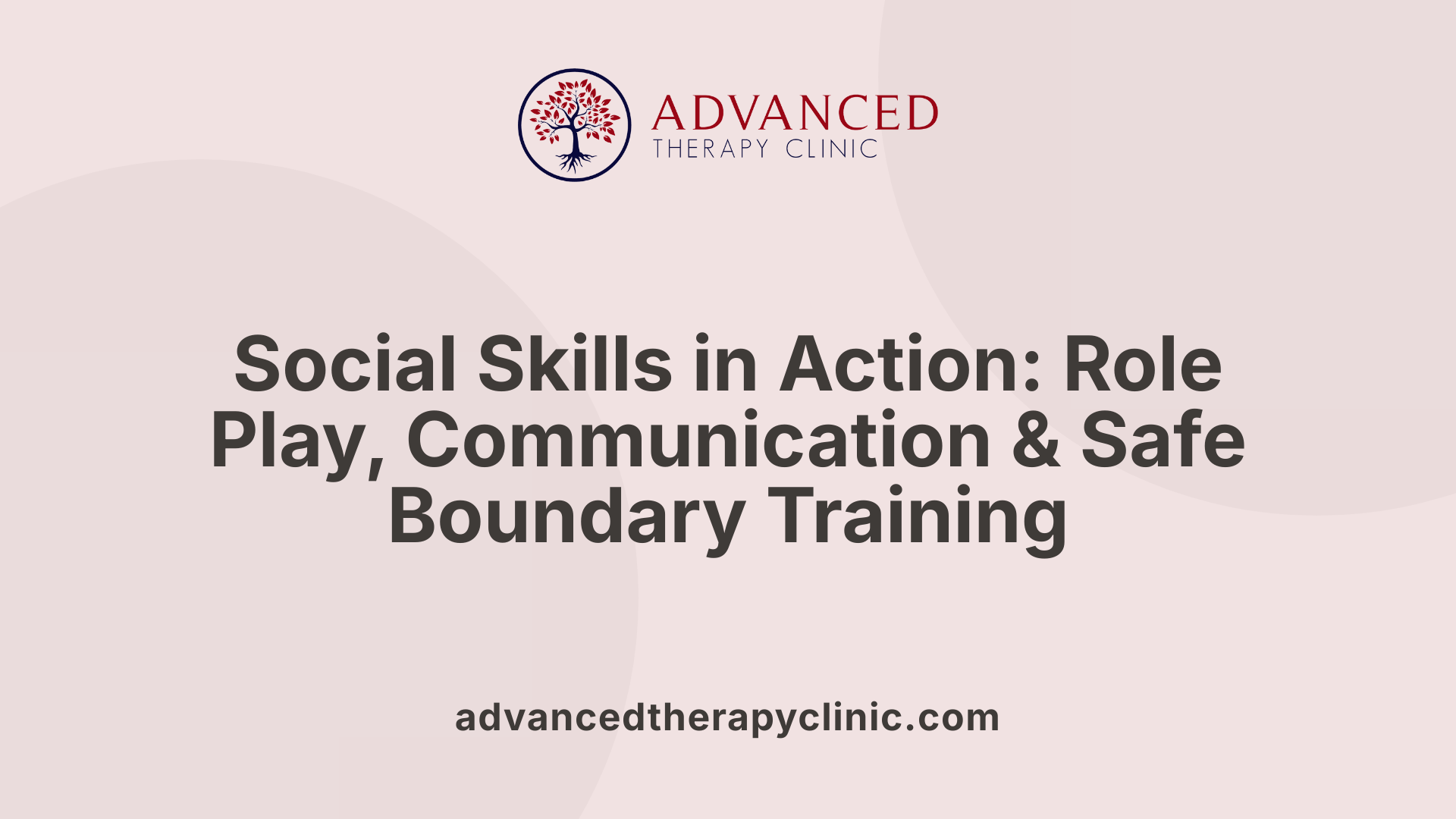How ABA Therapy Teaches Safe Social Boundaries


Understanding the Role of Therapy-related Fields in Social Development
Therapy-related fields broadly encompass various specialized disciplines aimed at enhancing individuals' physical, emotional, and behavioral well-being. Among these, Applied Behavior Analysis (ABA) therapy stands out as a scientifically validated approach particularly effective for individuals on the Autism spectrum. This article explores how ABA therapy teaches safe social boundaries, emphasizing its techniques, individualized programs, and ethical considerations to promote meaningful and secure social interactions.
The Spectrum of Therapy-Related Fields and Their Impact

What is encompassed under the term "therapy-related fields"?
Therapy-related fields include a broad spectrum of health and mental health disciplines aimed at supporting and improving an individual's overall well-being. These fields cover various specialized therapies such as Applied Behavior Analysis (ABA) which focuses on behavior and learning, physical therapy for movement and rehabilitation, occupational therapy to support daily living skills, speech therapy for communication enhancement, counseling for emotional and psychological support, and nutrition therapy to address health through diet.
Mental health professionals are also an integral part of therapy-related fields. This group includes psychologists, psychiatrists, licensed counselors, social workers, nurse practitioners, and pharmacists. Their work often involves diagnosis, therapy, and medication management tailored to each individual's needs.
Collectively, therapy-related fields address a diverse range of physical, behavioral, emotional, and psychological challenges. Their scope ranges from implementing behavioral interventions like ABA therapy to providing physical rehabilitation and mental health treatments. Through this multidisciplinary approach, therapy-related professionals help individuals navigate complex health issues and improve quality of life.
Core Principles and Individualization in ABA Therapy

What is ABA Therapy?
ABA therapy, or Applied Behavior Analysis, is an evidence-based approach grounded in the science of behavior and learning. It has been extensively studied and is recognized as the most scientifically supported method for helping individuals with Autism Spectrum Disorder (ASD).
How Does ABA Therapy Use Positive Reinforcement?
The therapy uses positive reinforcement to encourage new skill acquisition and reduce behaviors that interfere with social interactions. By rewarding desired behaviors, children are motivated to repeat these actions, slowly building more effective social skills over time.
Why are ABA Programs Individualized?
Each ABA program is tailored to meet the unique needs of the child. This individualization ensures that the therapy targets specific challenges and strengths, taking into account factors such as age, personal interests, and developmental level. Goals are set to be measurable and adaptable, allowing the program to evolve based on the child's progress.
What Are the Focuses of ABA Therapy Goals?
ABA therapy focuses on clearly defined, measurable goals to track improvement accurately. Programs emphasize developing core social skills and communication, addressing behaviors that hinder social engagement, and fostering safe social boundaries. Tailored, data-driven interventions and continual progress monitoring ensure the therapy remains responsive and effective for each child.
Teaching Social Skills and Safe Boundaries through ABA

What Core Social Skills Are Taught in ABA?
ABA therapy targets essential social skills such as initiating and maintaining conversations, understanding facial expressions and body language, taking turns, asking for help, joining group activities, and building emotional awareness. Each program is customized to a child's unique needs, enabling tailored development.
How Are Social Behaviors Broken Down into Teachable Steps?
ABA breaks social behaviors into smaller, manageable steps to simplify learning. This systematic approach allows children to master each stage before progressing, ensuring solid building blocks for complex social interactions.
What Role Do Role Playing and Games Play in Teaching?
Role playing and games are integral ABA techniques. They create safe, controlled environments where children practice social exchanges and mimic real-life situations. Through repetition and feedback, children gain confidence and spontaneity in social settings.
How Are Verbal and Non-Verbal Communication Skills Addressed?
ABA emphasizes both verbal and non-verbal communication such as speech, gestures, and body language. These skills are critical for forming relationships and understanding social cues, taught using methods like behavior skills training and natural environment teaching.
How Does ABA Help With Problem-Solving, Emotional Regulation, and Active Listening?
Developing social skills in ABA also includes enhancing problem-solving abilities, regulating emotions, and practicing active listening. These competencies support children in navigating daily challenges and fostering safe social boundaries in interactions with others.
Addressing Safety Awareness and Social Boundaries in ABA

How is safety awareness integrated into ABA therapy?
ABA therapy prioritizes safety awareness as a critical component, especially for individuals with Autism Spectrum Disorder (ASD). It teaches children to understand safe social boundaries and recognize potentially dangerous situations. Programs within ABA use positive reinforcement and tailored teaching techniques to instill these essential skills.
What does understanding boundaries and responding to danger involve?
Understanding social boundaries through ABA means learning to recognize personal space, consent, and appropriate interactions. Responding to danger includes recognizing unsafe situations and reacting appropriately, such as seeking help or avoiding harm. These skills are broken down into small, manageable steps using role-playing and real-life simulations to ensure comprehension and generalization.
How does Early Intensive Behavioral Intervention (EIBI) support young children?
EIBI is a specialized ABA approach designed for very young children with Autism. It focuses on developing communication, social skills, safety awareness, and cognitive abilities while reducing challenging behaviors. Within EIBI, safety training involves teaching children about boundaries and how to respond in emergencies, creating a strong foundation for safe social engagement.
What role do programs like 'Learn to Learn' play in supporting transitions?
Programs such as BASS’s proprietary 'Learn to Learn' aim to help children transition smoothly from center-based ABA therapy to structured school environments. They emphasize communication, self-regulation, social skills, and the ability to follow instructions. These skills collectively promote safe social interactions and help children adapt to new settings confidently.
Together, these ABA-based approaches and programs ensure that children not only develop vital social skills but also learn how to maintain their safety within social contexts.
Ethical Considerations and Continuous Adaptation in ABA

Respect for Child's Personality, Autonomy, and Communication Style
Ethical ABA therapy prioritizes deep respect for each child's individuality. Therapists carefully honor the child's unique personality, natural communication methods, and autonomy. This respectful approach ensures that interventions align with who the child is rather than imposing rigid or unnatural behaviors.
Continuous Adjustment of Programs Based on Progress
ABA programs are not static; they are dynamically tailored and regularly revised to match the child's ongoing development and achievements. Therapists continually monitor progress, modifying goals and strategies to maintain effective support and encourage further growth.
Role of Assessment and Tailored Goals
Initial and ongoing assessments form the foundation of ABA therapy. These evaluations identify the child's specific needs, preferences, and abilities. Goals are then individualized, considering factors like age and interests, which makes learning more relevant and impactful.
Promoting Spontaneous and Natural Social Interactions
A significant aim of ABA therapy is fostering spontaneous, real-life social engagement. Through gradual skill-building and careful teaching methods like role-playing, children learn to interact naturally—such as sharing a laugh or saying hello—helping them to connect authentically in everyday situations.
The Vital Role of ABA Therapy in Fostering Safe Social Boundaries
ABA therapy, grounded in rigorous behavioral science, plays a critical role in teaching safe social boundaries and essential social skills—particularly for children on the Autism spectrum. Its individualized, ethically guided approach employs positive reinforcement and strategic teaching methods such as role-playing and natural environment instruction to cultivate communication, safety awareness, and emotional regulation. Through continuous assessment and adaptation, ABA supports children in engaging more confidently and safely in social interactions, contributing not only to their immediate well-being but also to their long-term social success and autonomy.
References
Recent articles

Expressive Speech Delay 2-Year-Old
Understanding and Addressing Expressive Speech Delay in Toddlers

How Speech Recognition Works
Unlocking the Power of Speech Recognition in Therapy and Healthcare

Autism and Head Size
Understanding the Complex Relationship Between Autism and Head Size

Occupational Therapy in Autism
Enhancing Independence and Quality of Life Through Occupational Therapy in Autism

Do Autistic People Understand Sarcasm?
Navigating the Nuances: Understanding Sarcasm and Social Communication in Autism

Autism Routines
Crafting Effective Daily Structures for Children with Autism

